Y4x+ydx 2x2 Ydy0
Let's look more closely at how d dx (y 2) becomes 2y dy dx The Chain Rule says du dx = du dy dy dx Substitute in u = y 2 d dx (y 2) = d dy (y 2) dy dx And then d dx (y 2) = 2y dy dx Basically, all we did was differentiate with respect to y and multiply by dy dx.
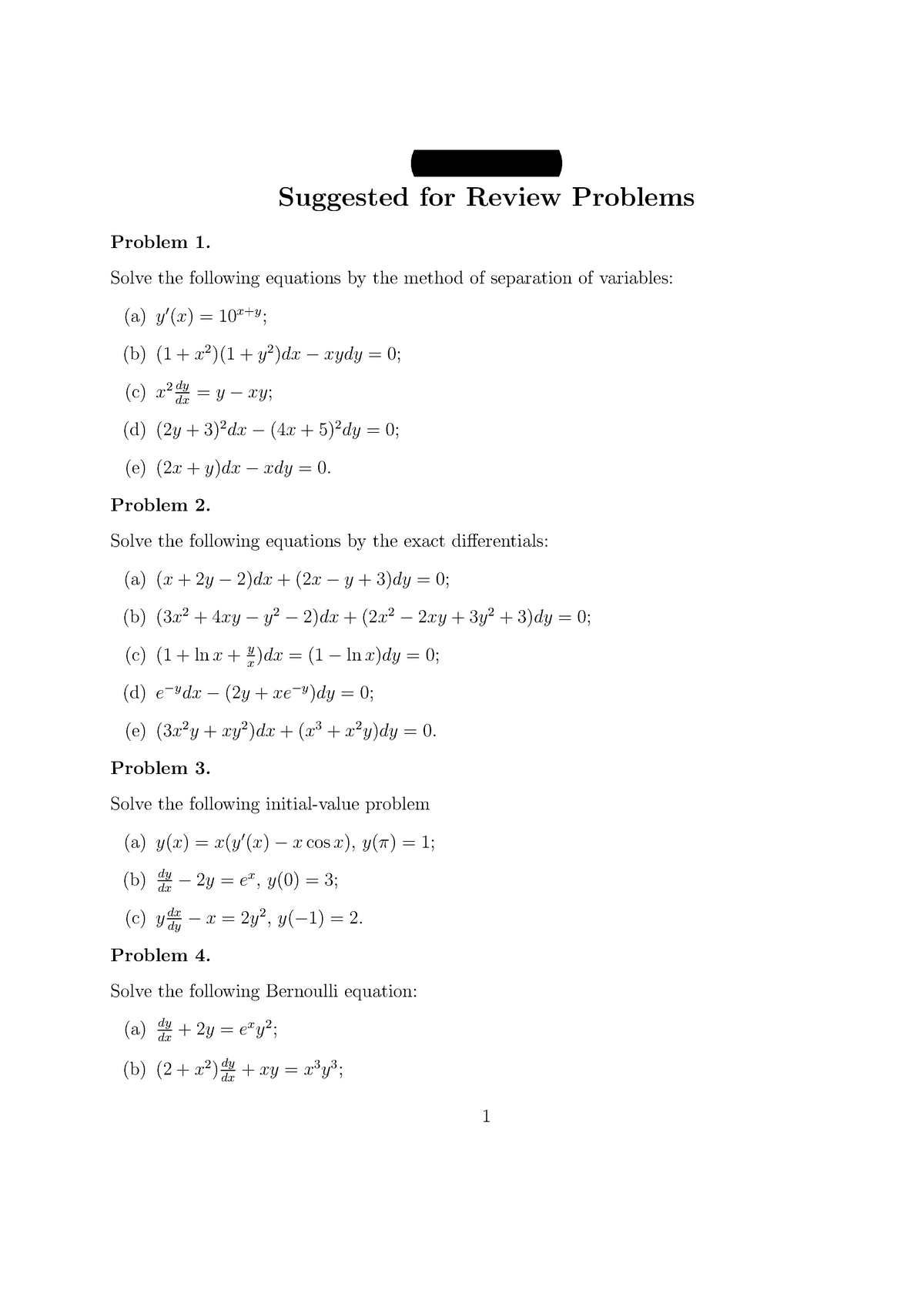
Y4x+ydx 2x2 ydy0. Combine all terms containing d Combine all terms containing d \left (4yx^ {2}y^ {2}x2x^ {2}y^ {2}2y^ {2}\right)d=0 ( 4 y x 2 y 2 x − 2 x 2 y 2 2 y 2) d = 0 The equation is in standard form The equation is in standard form \left (4yx^ {2}2y^ {2}xy^ {2}2x^ {2}y^ {2}\right)d=0. Answer and Explanation 1 Become a Studycom member to unlock this answer!. Solve y(4xy)dx 2(x^2y)dy = 0 by finding the integrating factor and test for exactness Question Solve y(4xy)dx 2(x^2y)dy = 0 by finding the integrating factor and test for exactness This problem has been solved!.
Calculus Find dy/dx y=3x^24x y = 3x2 − 4x y = 3 x 2 4 x Differentiate both sides of the equation d dx (y) = d dx (3x2 − 4x) d d x ( y) = d d x ( 3 x 2 4 x) The derivative of y y with respect to x x is y' y ′ y' y ′ Differentiate the right side of the equation Tap for more steps. Dy dx P(x)y = Q(x)yn, where P and Q are functions of x, and n is a constant Show that the transformation to a new dependent variable z = y1−n reduces the equation to one that is linear in z (and hence solvable using the integrating factor method) Solve the following Bernoulli differential equations Exercise 2 dy dx − 1 x y = xy2. The given differential equation is x2 4x 4 y (x 2)dy/dx y2 = 0 (x > 0) which is further simplified as follows (x 2)2 y (x 2)dy/dx y2 = 0 Substituting x 2 = t, we get dx/dy = dt/dy which passes through the point (1, 3) Therefore, from Eq (1), we get.
Ex 96, 11 For each of the differential equation find the general solution 𝑦 𝑑𝑥 𝑥− 𝑦2𝑑𝑦=0 Step 1 Put in form 𝑑𝑦𝑑𝑥 Py = Q or 𝑑𝑥𝑑𝑦 P1 x = Q1, y dx (x − y2) dy = 0 y dx = − (x − y2)dy 𝑑𝑦𝑑𝑥 = −𝑦𝑥− 𝑦2 This is not of the form 𝑑𝑦𝑑𝑥 Py = Q ∴ we find. 5 Problem 15 (xy2 bx2y)dx(xy)x2 dy = 0 First, for this to be exact M y = 2xy bx2 = 3x2 2xy = N x So b = 3 With this, find the solution to the DE f(x,y) = Z M dx = Z xy 23x2ydx = 1 2 x y2 x3y g(y) And solve for g(y) f y = x 2y x3 g0(y) = x3 x y So we didn’t need g(y) This leaves 1 2 x 2y x3y = C 6 Problem 18 Done in. Extended Keyboard Examples Upload Random Compute answers using Wolfram's breakthrough technology & knowledgebase, relied on by millions of students & professionals For math, science, nutrition, history, geography, engineering, mathematics, linguistics.
Solution to Differential equations question Solve differential equation 2xy9x^2(2yx^21)\frac{dy}{dx}=0, \ y(0)=3 ⃤ Plainmath is a free database of m. A solution of the differential equation is AMU 13 3 The differential equation corresponding to the equation where are constants is J & K CET 13 4 If is the solution of the differential equation then the value of is equal to KEAM 13. Answer (1 of 3) Solve \quad\quad\displaystyle \frac{dy}{dx} = (y 4x)^2 \textbf{Let } \displaystyle \boldsymbol{u = y 4x \longrightarrow \frac{du}{dx} = \frac{dy.
Weekly Subscription $249 USD per week until cancelled Monthly Subscription $799 USD per month until cancelled Annual Subscription $3499 USD per year until cancelled. Create your account View this answer (x23y2) dx−2xy dy = 0 ( x 2. (X 2y) Dx − (2x − Y) Dy = 0 CBSE CBSE (Science) Class 12 Question Papers 1851 Textbook Solutions MCQ Online Tests 31 Important Solutions 4564 Question Bank Solutions Concept Notes & Videos 725 Time Tables 18 Syllabus Advertisement Remove all ads.
DIFFERENTIAL EQUATIONS FIRST ORDER DIFFERENTIAL EQUATIONS Solve differential equation 2xy9x^2 (2yx^21)dy/dx=0, y (0)= 3 Chesley Answered Solve differential equation 2xy − 9x2 (2y x2 1)dy / dx = 0, y (0)= 3 Your answer Email me at this address if my answer is selected or commented on Email me if my answer is. Transcribed Image Text Consider (x y) (4x y) dx x (5x y) dy=0 Let y= VX Then the resulting differential equation is?. Learn how to solve differential equations problems step by step online Solve the differential equation dy/dx=(2x)/(3y^2) Take \frac{2}{3} out of the fraction Rewrite the differential equation in the standard form M(x,y)dxN(x,y)dy=0 The differential equation y^2dy\frac{2}{3}xdx=0 is exact, since it is written in the standard form M(x,y)dxN(x,y)dy=0, where M(x,y) and N(x,y) are the.
Dx dt = 2x 1− x 2 −xy, dy dt = 3y 1− y 3 −2xy To find the xnullcline, we solve2x 1− x 2 − xy = 0, where multiplying out and collecting the common factor of x gives x(2− x− y) = 0 This gives two xnullclines, the linexy = 2 and the yaxis By plugging in the points (1,0) and (2,2) into2x 1− x 2 − xy, we see that solutions. −x2 y2 2 Problem 2 Use the ”mixed partials” check to see if the differential equation below is exact If it is exact find a function F(x,y) whose level curves are solutions to the differential equation (−4xy2 y)(−4x2y x) dy dx = 0 Solution As before we let M(x,y) = −4xy2 y and N(x,y) = −4x2y x From here we compute ∂. The general solution is y=(2(e^(4(xC))1))/(e^(4(xC))1) This is a first order separable differential equation dy/dx=y^24 dy/(y^24)=dx intdy/(y^24)=intdx Perform partial fraction 1/(y^24)=A/(y2)B/(y2) =(A(y2)B(y2))/((y^24)) Compare the numerators 1=A(y2)B(y2) Let y=2, =>, 1=4A, A=1/4 Let y=2, =>, 1=4B, B=1/4 Therefore, 1/(y^24)=(.
Here we will look at solving a special class of Differential Equations called First Order Linear Differential Equations First Order They are "First Order" when there is only dy dx, not d 2 y dx 2 or d 3 y dx 3 etc Linear A first order differential equation is linear when it can be made to look like this dy dx P(x)y = Q(x) Where P(x) and Q(x) are functions of x To solve it there is a. 4x 2 y 3 4xy 2 y = 0To find dy/dx we need to differentiate all the terms in the equation As you may notice the x's and y's are mixed together so we will have to use implicit differentiation Since we are differentiating in terms of x, all of the x terms can be differentiated as usual, whilst the y terms will be followed by a dy/dx The first two terms are more straight forward to deal. can you please explain how to to find dy/dx for the function x^2 y Y^2 x = 2 asked in CALCULUS by mathgirl Apprentice differentiation;.
X^2 2 y^2 = 1 Natural Language;. Y=0 dx = Z π/2 0 1 2 sinxdx = h −1 2 cosx i π/2 x=0 = 1 2 05 Example Find the volume of the solid bounded above by the plane z = 4 − x − y and below by the rectangle R = {(x,y) 0 ≤ x ≤ 1 0 ≤ y ≤ 2} Solution The volume under any surface z = f(x,y) and above a region R is given by V = ZZ R f(x,y)dxdy In our case V = Z 2 0 Z 1. $M~dx N~dy = 0$ $y(4x y)~dx 2(x^2 y)~dy = 0$ $M = y(4x y) = 4xy y^2$ $N = 2(x^2 y) = 2x^2 2y$ $\dfrac{\partial M}{\partial y} = 4x 2y$ $\dfrac{\partial N}{\partial x} = 4x$ $\dfrac{\partial M}{\partial y} \dfrac{\partial N}{\partial x} = (4x 2y) (4x)$.
Get an answer for '`3(y4x^2)dx xdy = 0` Solve the firstorder differential equation by any appropriate method' and find homework help for other Math questions at eNotes. Hello, People!Here is a video of Exact equation problem Performing partial derivative of M and N, also integration as well under certain conditions Please. Click here👆to get an answer to your question ️ Solve the differential equation ( x^2 y^2 2x )dx 2y dy = 0.
The integrating factor is 1/y^2 and leads to the equation P (x,y)dx Q (x,y)dy =0 , with P = 4x/y 1 , P_y = 4x/y^2 Q = 2/y 2x^2/y^2 , Q_x = P_y This equation is exact It is the total differential dF (x,y) =0 with solution F (x,y)=C obtained from F_x = P = 4x/y 1 F_y = Q = 2/y 2x^2/y^2. Solution for y (4xy)dx2 (x^2y)dy=0 equation Simplifying y (4x y) * dx 2 (x 2 1y) * dy = 0 Reorder the terms for easier multiplication y * dx (4x y) 2 (x 2 1y) * dy = 0 Multiply y * dx dxy (4x y) 2 (x 2 1y) * dy = 0 (4x * dxy y * dxy) 2 (x 2 1y) * dy = 0 Reorder the terms (dxy 2 4dx 2 y) 2 (x 2 1y) * dy = 0 (dxy 2 4dx 2 y) 2 (x 2 1y) * dy = 0 Reorder the. y = 2x^2c/x^2 > 2(y4x^2)dxxdy = 0 Which we can rearrange as follows dy/dx = (2 (y4x^2))/x " " = 8x(2y)/x dy/dx (2y)/x = 8x.
Extended Keyboard Examples Upload Random Compute answers using Wolfram's breakthrough technology & knowledgebase, relied on by millions of students & professionals For math, science, nutrition, history, geography, engineering, mathematics, linguistics, sports, finance, music. The equations d 2 y dy a 0 dx 2 a 1 dx a 2 y 0 (1) d 2 y dy and a 0 dx 2 a 1 dx a 2 y Q ( x) where a 0 0 (2) are called respectively, the homogeneous and the nonhomogeneous equations of the second order with constant coefficients when a 0, a 1, a 2 are constants. Substitute y = t x t ( t 2 x) = ( t − 2 x) y ′ Note that y ′ = t ′ x t t ( t 2 x) = ( t − 2 x) ( t ′ x t) After some simplifications you get t ′ ( t − 2 x) = 4 t Consider now x ′ = d x d t x ′ x 2 t = 1 4 Which is easy to solve.
V 5 dx 2v2 A dv30 dx 2v2 5v B В dv= 0 v 5 dx dv=0 2v2 5v dx 2v2 dv= 0 check_circle. Answered y(4x y) dx 2(x² y) dy = 0 bartleby. Find dy/dx x^24xyy^2=4 Differentiate both sides of the equation Differentiate the left side of the equation Tap for more steps Differentiate Tap for more steps By the Sum Rule, the derivative of with respect to is Differentiate using the Power Rule which states that is where.
Int (((xy)/2)^2 (1(xy)/2)^2) dx dy, x=0 to 1, y=0 to 1 Natural Language;. A solution of the differential equation (dy/dx) 2 – x(dy/dx) y = 0 is (A) y = 2 (B) y = 2x 2 – 4 (C) y = 2x (D) y = 2x – 4. Solution for (4xxy^2)dx (yx^2y)dy=0 equation Simplifying (4x xy 2) * dx (y x 2 y) * dy = 0 Reorder the terms for easier multiplication dx (4x xy 2) (y x 2 y) * dy = 0 (4x * dx xy 2 * dx) (y x 2 y) * dy = 0 (4dx 2 dx 2 y 2) (y x 2 y) * dy = 0 Reorder the terms 4dx 2 dx 2 y 2 (x 2 y y) * dy = 0 Reorder the terms for easier multiplication 4dx 2 dx 2 y 2 dy (x 2 y.
SolutionGiven , Differential Equation is(x 2−yx 2)dy(y 2xy 2)dx=0This can be Simplified as(yx 2−x 2)dy=(y 2xy 2)dxx 2(y−1)dy=y 2(1x)dxy 2dy(y−1) = x 2dx(1x) Now On Integrating both. Assuming you have an equation of the form M(x)dx N(y)dy = 0, if M y = N x, the equation is exact To solve, integrate M(x) with respect to x You should get a "constant" term that's actually a function of y alone, say g(y) Integrate N(y) with respect to y You should get another "constant" term that is a function of x alone, say f(x). 21(xy2x)dx(yx2y)dy=0 One solution was found d = 0 Step by step solution Step 1 Step 2 Pulling out like terms 21 Pull out like factors y Is the solution of the math problem right?.
Stack Exchange network consists of 178 Q&A communities including Stack Overflow, the largest, most trusted online community for developers to learn, share their knowledge, and build their careers Visit Stack Exchange. 0 dx Z√ 25−x2 4x/3 f(x,y)dy = Z 4 0 dy Z 3y/4 0 f(x,y)dx Z 5 4 dy Z√ 25−y2 0 f(x,y)dx b) Se trata de la regi´on comprendida entre la par´abola y = x2/4−1 y la recta y = 2−x6 2 2 8 Al invertir el orden de integraci´on, la integral se descompone as´ı I = Z 0 −1 dy Z 2 √ y1 −2 √ y1 f(x,y)dx Z 8 0 dy Z 2−y −2. X=3 x=0 x2 dx Z x=4 x=3 Z x(4x x2)dx = 9 4 3 x3 1 4 x4 x=4 x=3 = 175 12 If we regard this region as horizontally simple instead, so the xintegral is inside, then the left boundary is always given by x= yand the right boundary is always given by the larger value of x for which y= 4x x2 Using the quadratic formula for the equivalent.
Question find the relation between x and y. $\frac{dy}{dx}=\frac{3x^24x2}{2\left(y1\right)}$ Choose the solving method Linear Differential Equation Exact Differential Equation Separable Differential Equation Homogeneous Differential Equation Suggest a method or feature Send. Exact\2xy^24=2 (3x^2y)y' exact\2xy^24=2 (3x^2y)y', y (1)=8 exactdifferentialequationcalculator 2xy9x^2 (2yx^21)\frac {dy} {dx}=0, y (0)=3 en Sign In Sign in with Office365 Sign in with Facebook OR.
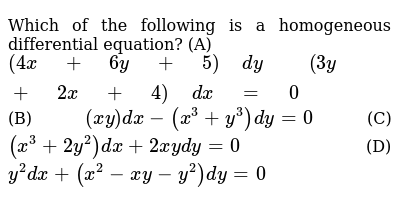
Which Of The Following Is A Homogeneous Differential Equation A 4x 6y 5 Dy 3y 2x 4 Dx 0 B X Y Dx X 3 Y 3 Dy 0 C X 3 2y 2 Dx 2x Ydy 0 D Y 2dx X 2 X Y Y 2 Dy 0
Solve The Differential Equations 2x Y 1 Dx 4x 2y 1 Dy 0 Sarthaks Econnect Largest Online Education Community
2
Y4x+ydx 2x2 Ydy0 のギャラリー

Dy Dx 4x Y 1 2 Youtube
2

画像をダウンロード Y 4x Y Dx 2 X 2 Y Dy 0 Y 4x Y Dx 2 X 2 Y Dy 0 Nyosspix3deq
Freehelpmate Com

15 2xy Y 2 Dx 2xy X 2 2x 2y 2 2xy 3 Dy 0 Homeworklib

Solved 1 Y 4x Y Dx 2 X2 Y Dy 0 2 X 1 X 2 Chegg Com
Xy 2x Y 2 Dx X 2 2x Dy 0
What Is The Solution For X Y X Dy X Y Y Dx 0 Quora

Exercise 2 4 Marks Consider The Equation 2y 6x Dr 3r 4xy 1 Dy 0 1 Is It Exact 2 Use A Special Integrati Homeworklib
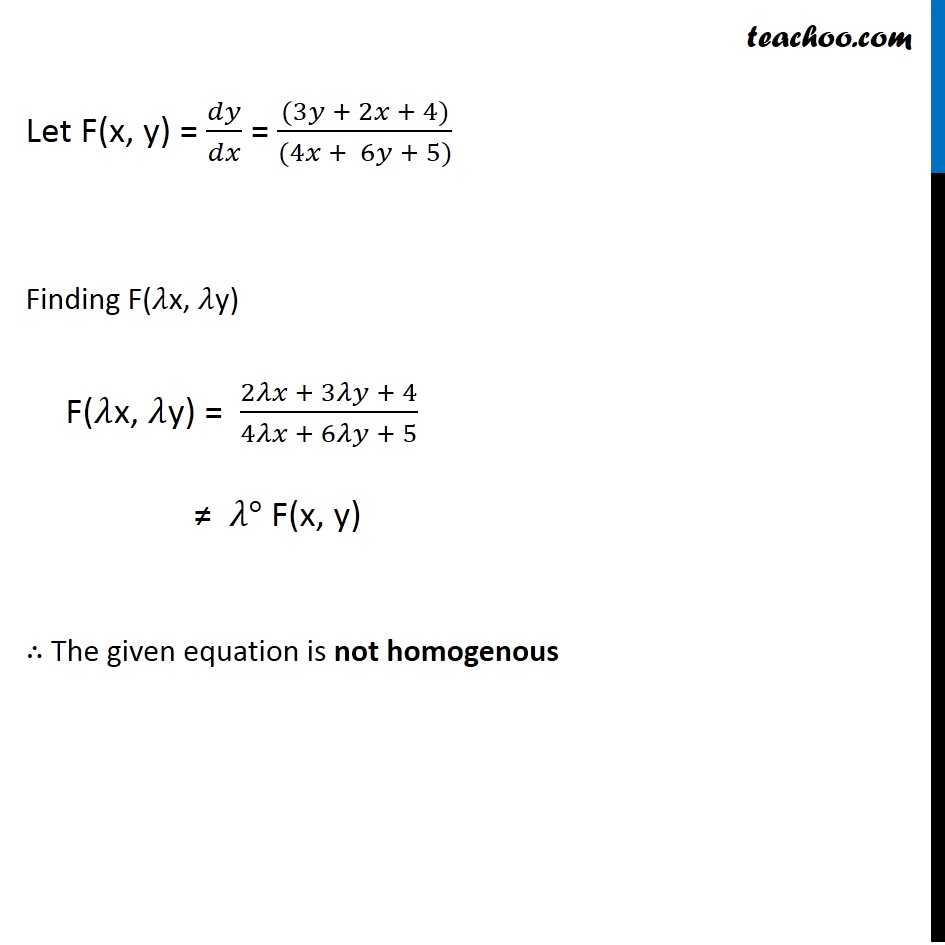
Ex 9 5 17 Mcq Which Is A Homogeneous Differential Equation

How To Do Implicit Differentiation 7 Steps With Pictures
3 8 Implicit Differentiation Calculus Volume 1

Solve X 2 4xy 2y 2 Dx Y 2 4xy 2x 2 Dy 0
2

12 22y Azy 2y Dr 22 2 Dy 0 13 Ydx 1t Itprospt
1
3 8 Implicit Differentiation Calculus Volume 1

Ipe Material Notes

Solve Y 2 2x 2y Dx 2x 3 Xy Dy 0 Mathematics Stack Exchange
2
The Solution Of The Differential Equation Dy Dx 4x Y 1 2 Sarthaks Econnect Largest Online Education Community
What Is The Solution To This Ode 3x 2 4xy Y 2 Dx 2x 2 2xy 9 Dy 0 Quora
Differential Equation Of Dy Dx 2x Y 4 4x 2y 1 Physics Forums

Solve The Following Differential Equations A Xdy Y Dx I X Dx Y Dy 2 Where A Is A Constant Ii Cos X Cos X Sin A Sin Y

Verifying Solutions To Differential Equations Video Khan Academy
Solved Y 4x Y Dx 2 X 2 Y Dy 0 Solve This Give Me Explanation And Clear Writings Course Hero

X2 Y2 2 4xy Find Dy Dx Mathematics Topperlearning Com 6729
The Solution Of Y 2x 2y E X Dx E X Y 3 Dy 0 If Y 0 1 Is Sarthaks Econnect Largest Online Education Community

How To Solve Exact Differential Equations In Matlab Stack Overflow
2
2

Math 432 Hw 2 5 Solutions Pdf Free Download
Solved Evaluate The Following Differential Equations Integrating Factor By Inspection Y 2 Xdx Ydy X 2 Y 2 Ydx Xdy 0 I Ntegrating Fac Course Hero

Solve Xy 3 Y Dx 2 X 2y 2 X Y 4 Dy 0 Youtube

Solve Y 2 2x 2y Dx 2x 3 Xy Dy 0 Mathematics Stack Exchange

Suggested Problems Ode Math 263 Ordinary Differential Equations Studocu
Solved Exact Differential Equations Course Hero
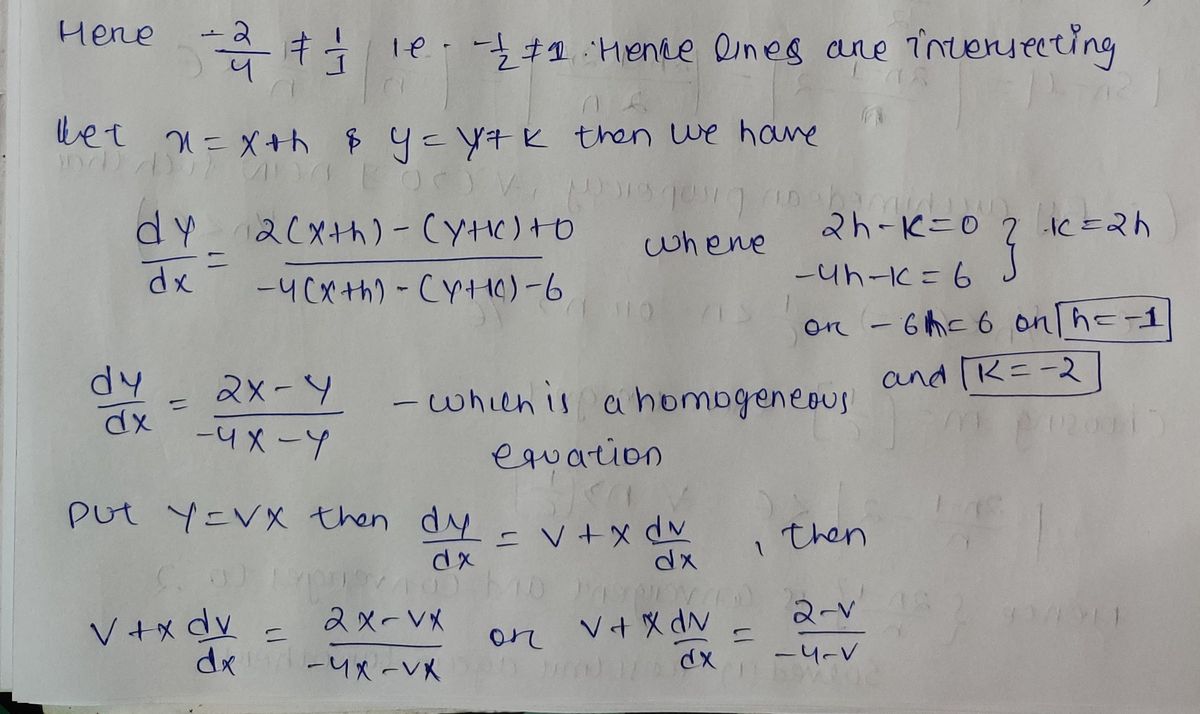
Answered Solve For Solution To Differential Bartleby

Exact Differential Equation 2xy Sec 2 X Dx X 2 2y Dy 0 Youtube
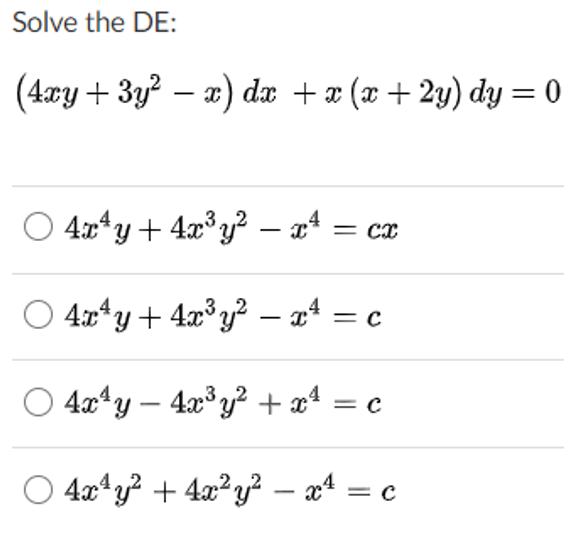
Answered Solve The De 4ry 3y X Dae X X Bartleby
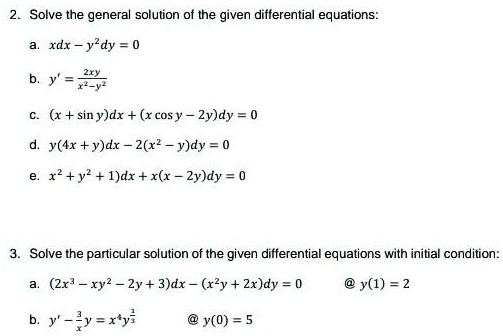
Solved Solve The General Solution Of The Given Differential Equations Rdx Y2dy B Y Zy X Sin Y Dx Rcosy 2y Dy Y 4x Y Dx 2 X2 Yjdy

How To Do Implicit Differentiation 7 Steps With Pictures

Solve The Given Initial Value Problem Dy Dx P X Y 4x Y 0 4x Y 0 3 Where 2 0 Wegglab
Math Jhu Edu
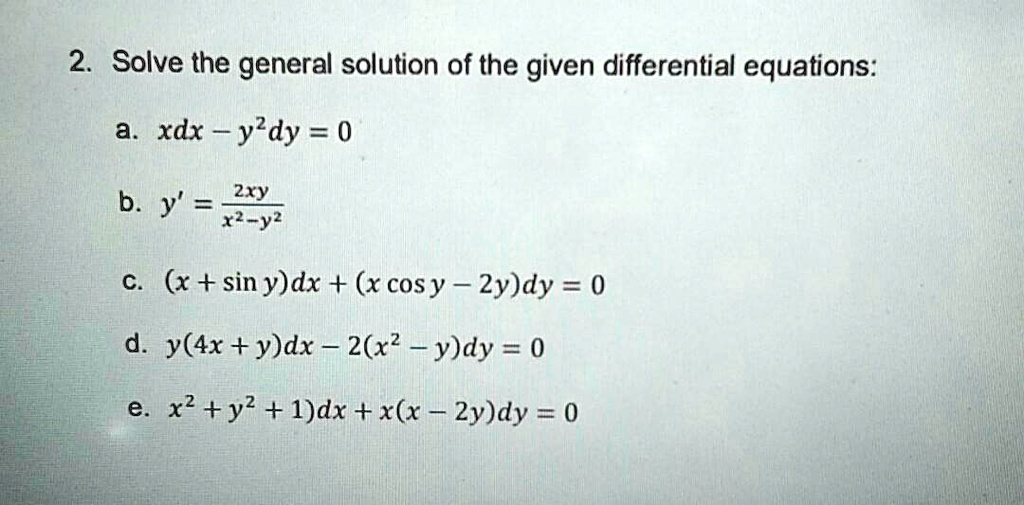
Solved 2 Solve The General Solution Of The Given Differential Equations A Xdx Yldy 0 2xy B Y X Y2 C X Sin Y Dx X Cosy 2y Dy 0

Verify That The Given Differential Equation Is Exact 2x 3y Dx 3x 2y Dy 0 Brainly In
2
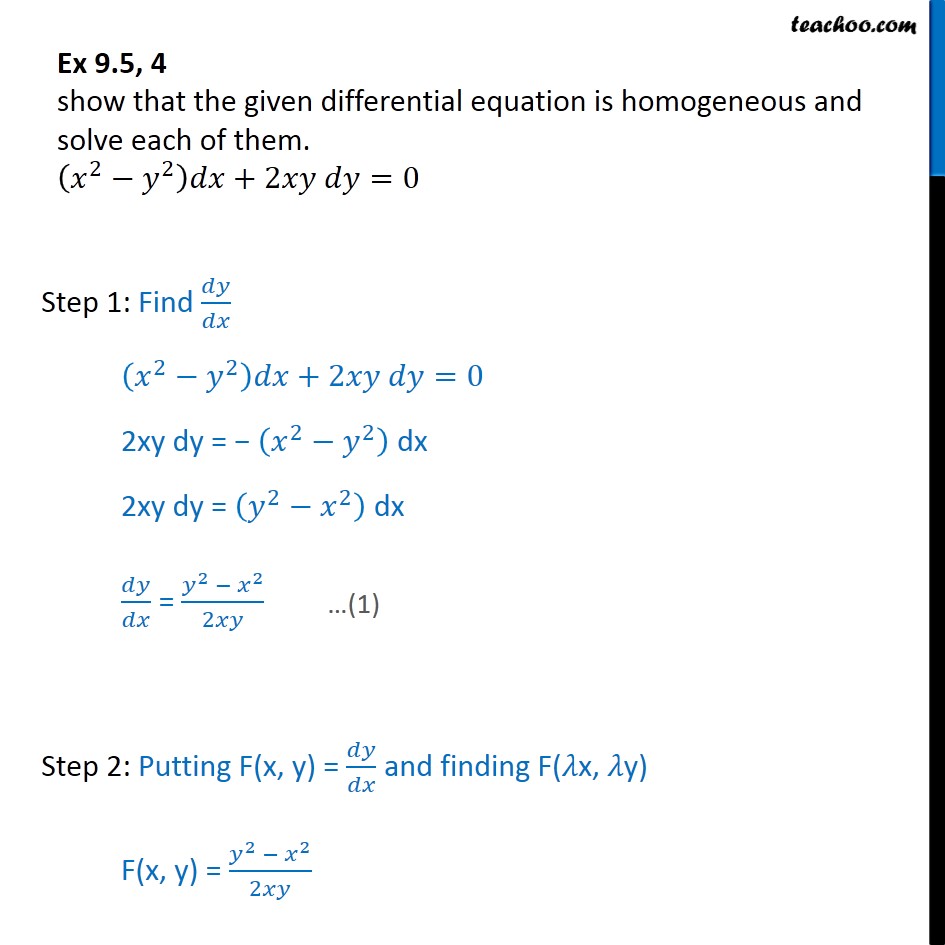
Ex 9 5 4 Show Homogeneous X2 Y2 Dx 2xy Dy 0 Ex 9 5
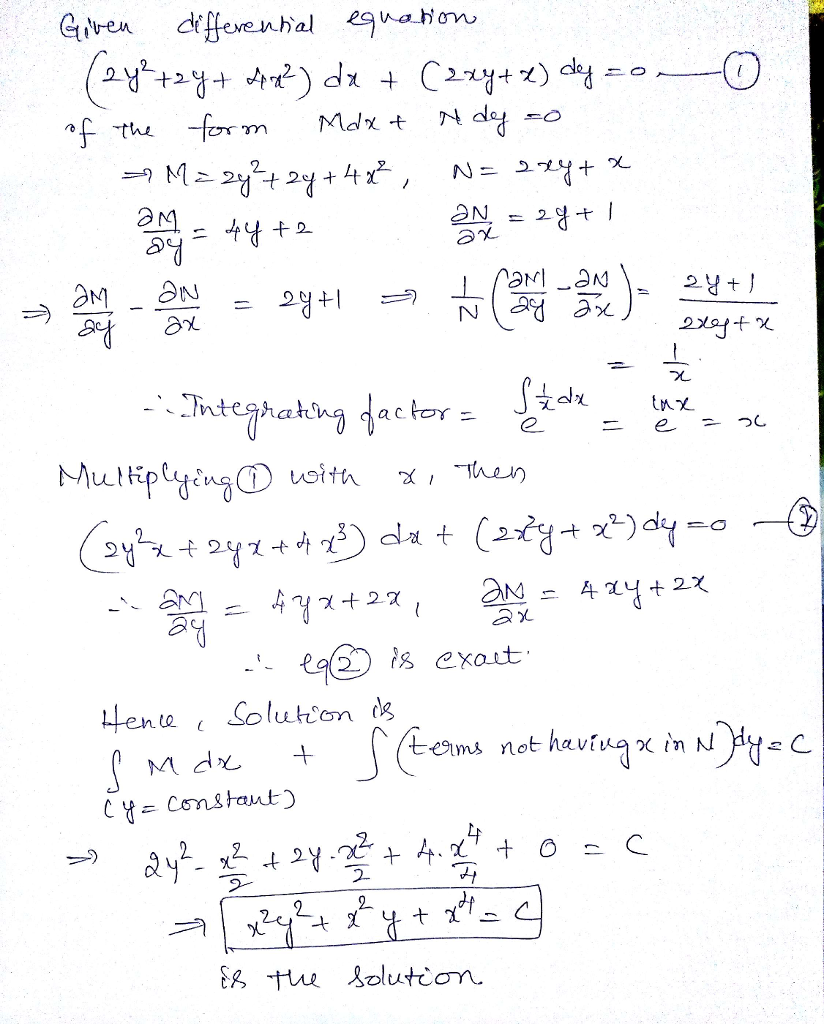
Solve The Following Ordinary Differential Equation 2y 2 2y 4x 2 Dx 2xy X Dy 0 Wegglab
2

Worked Example Implicit Differentiation Video Khan Academy
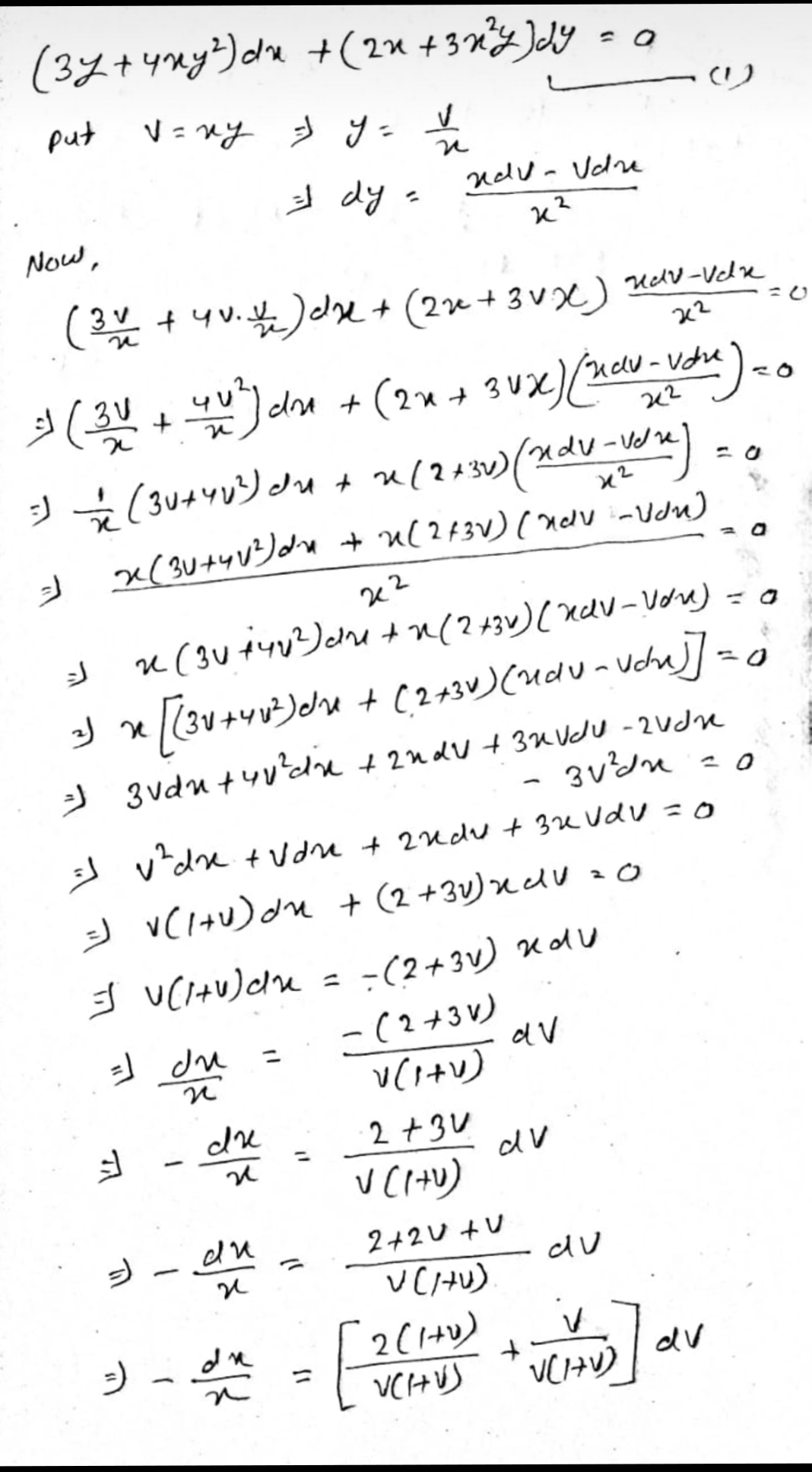
Answered 3y 4xy2 Dx 2x 3x2y Dy 0 Maths Bartleby
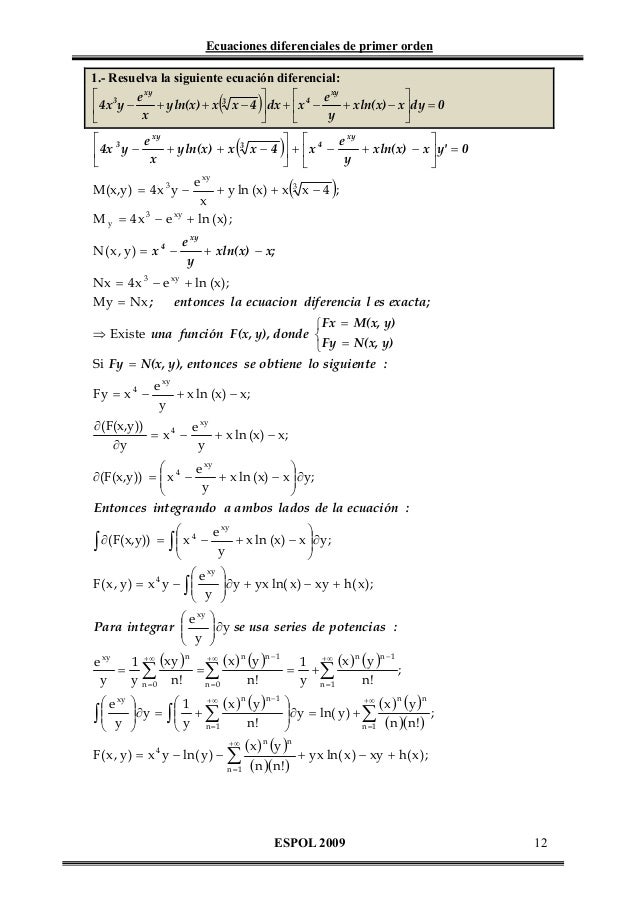
Solucionario Ecuaciones Diferenciales
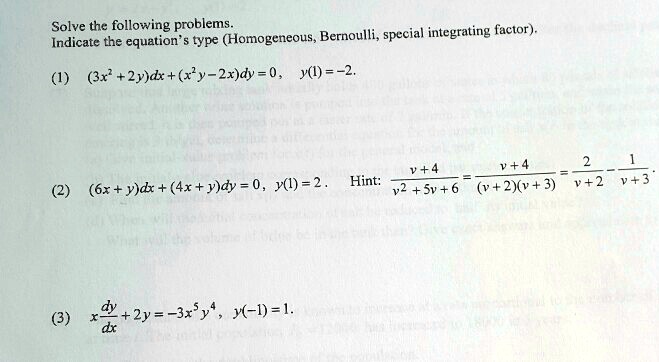
Solve The Following Problems Equation Type Homogene Itprospt

If Y Xx Prove That D2y Dx2 1 Y Dy Dx 2 Y X 0 Explain In Great Detail Mathematics Topperlearning Com X4m0m1ww
How To Solve Dy Dx 4x Y 7 2x Y 1 Quora
2
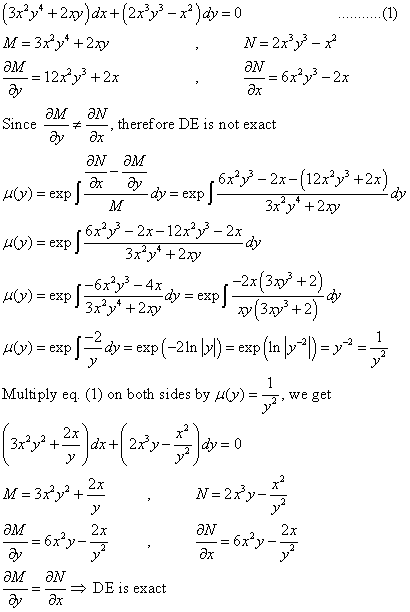
Differential Equations Solved Examples Show That Following Differential Equation Is Not Exact 3x 2y 4 2xy Dx 2x 3y 3 X 2 Dy 0 Then Find An Integrating Factor To Solve The Differential Equation
1
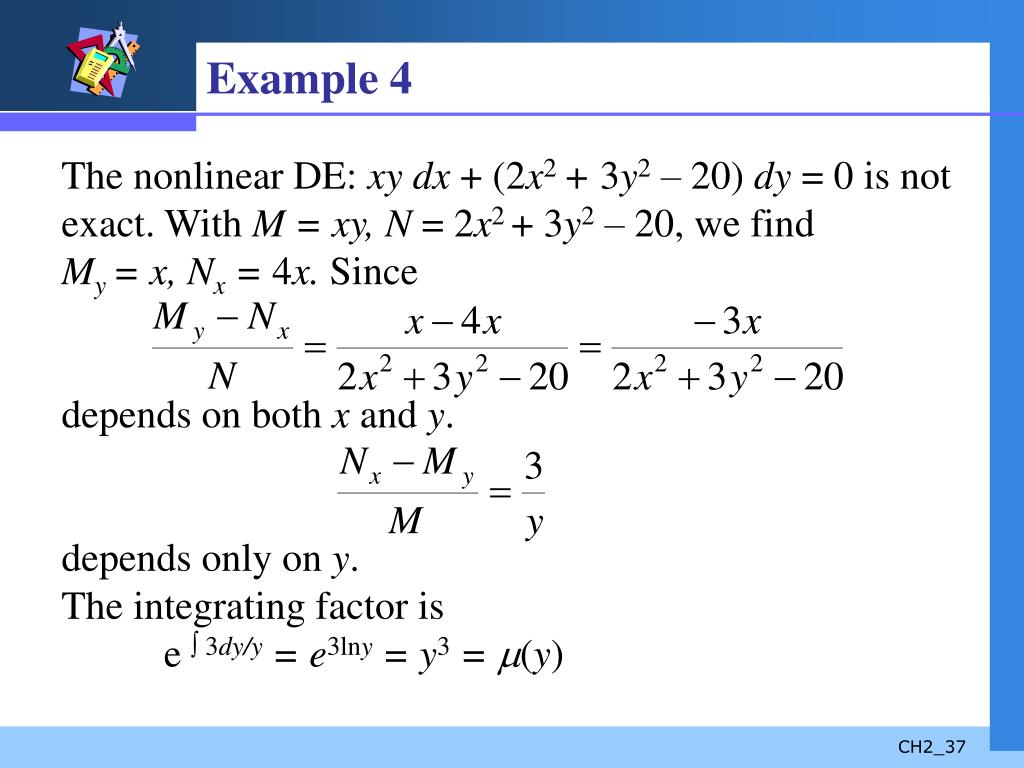
Ppt First Order Differential Equations Powerpoint Presentation Free Download Id

Solved 2ye Dy V E 2x Cos Xº Dx Y 4x Y Dx Chegg Com

Help With Differential Equations Having Problems With The 2nd Problem 3rd 6th 7th And The Rest I Don 39 T Understand How To Work The 2nd 3rd 6th And The Rest Of The Questions

Differential Equations Solved Examples Solve The System Of Differential Equations By Systematic Elimination Dx Dt 2x Y Dy Dt 4y
2
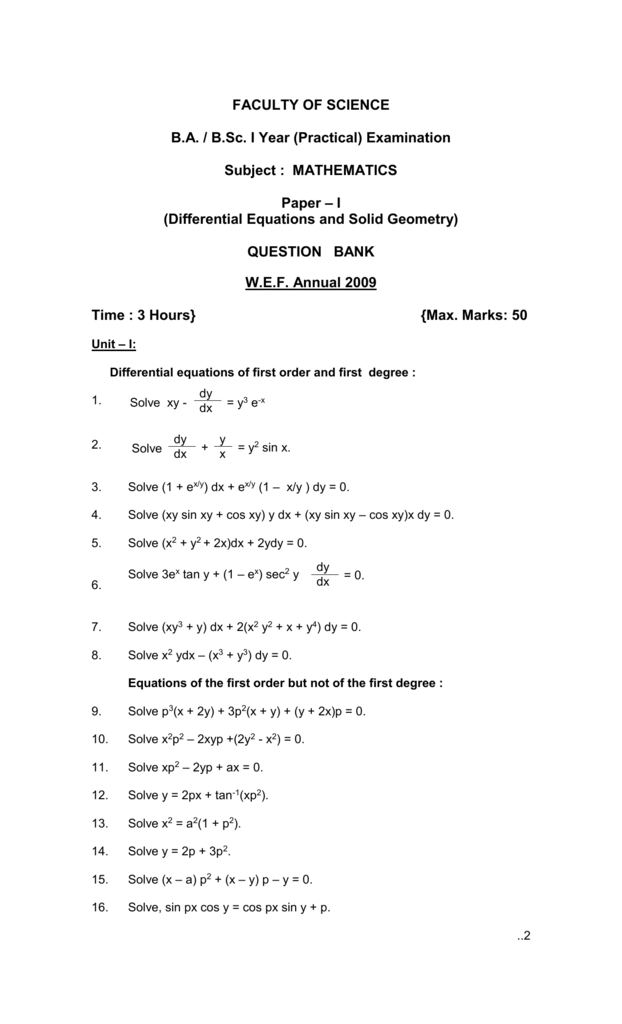
Paper

Solve Y 2 2x 2y Dx 2x 3 Xy Dy 0 Mathematics Stack Exchange
2
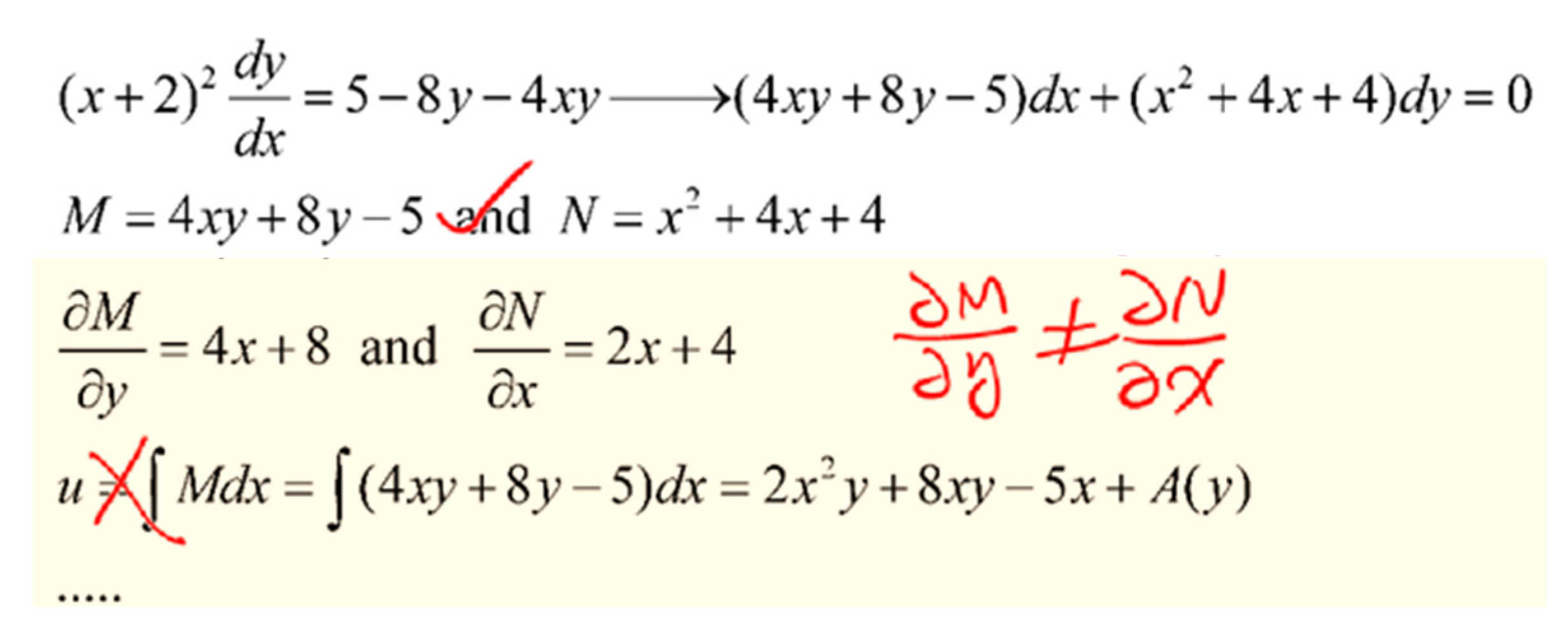
Mathematics Free Full Text Effective Pedagogy Of Guiding Undergraduate Engineering Students Solving First Order Ordinary Differential Equations
2

Jamjam S Blog

Solve The Differential Equation Dy Dx Square 4x Y 1 Youtube

Ex 9 6 11 Find General Solution Y Dx X Y2 Dy 0

Engineering Mathematics Notes

Solved Problems In Differential Equations 2500 Solved Problems In Differential Docsity

Solved Exercises Solve Each Of The Differential Equations In Chegg Com
How To Solve The Differential Equation 2x Y Dx 4x Y 6 Dy 0 Quora
2
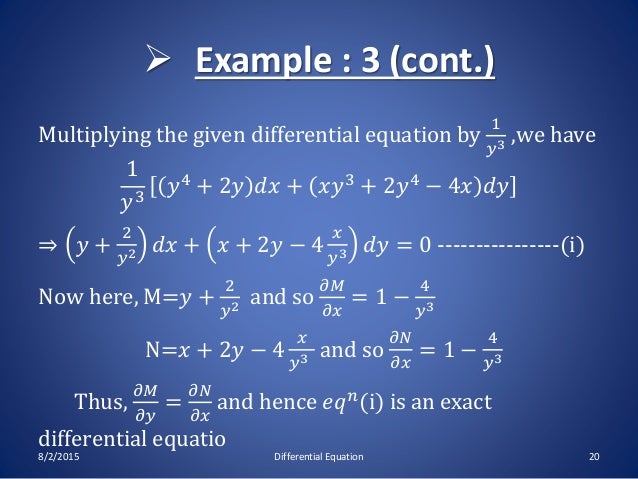
Exact Non Differential Equation
1

X 2 4xy 2y 2 Dx Y 2 4xy 2x 2 Dy 0 Brainly In
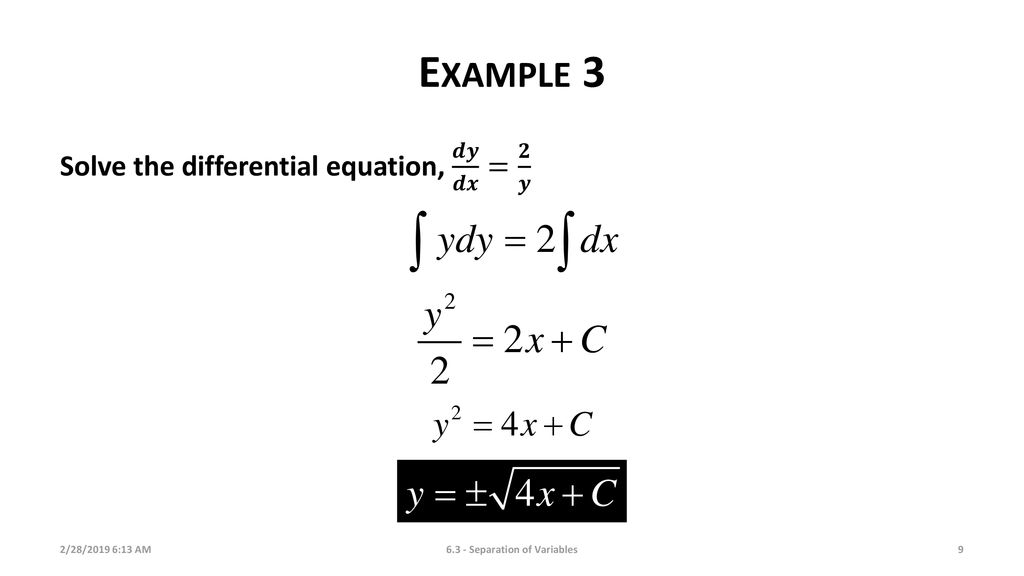
Separation Of Variables Ppt Download

Solved Viii Integrating Factor By Formula 1 Y 4x Y Dx Chegg Com

Differential Equations Pdf
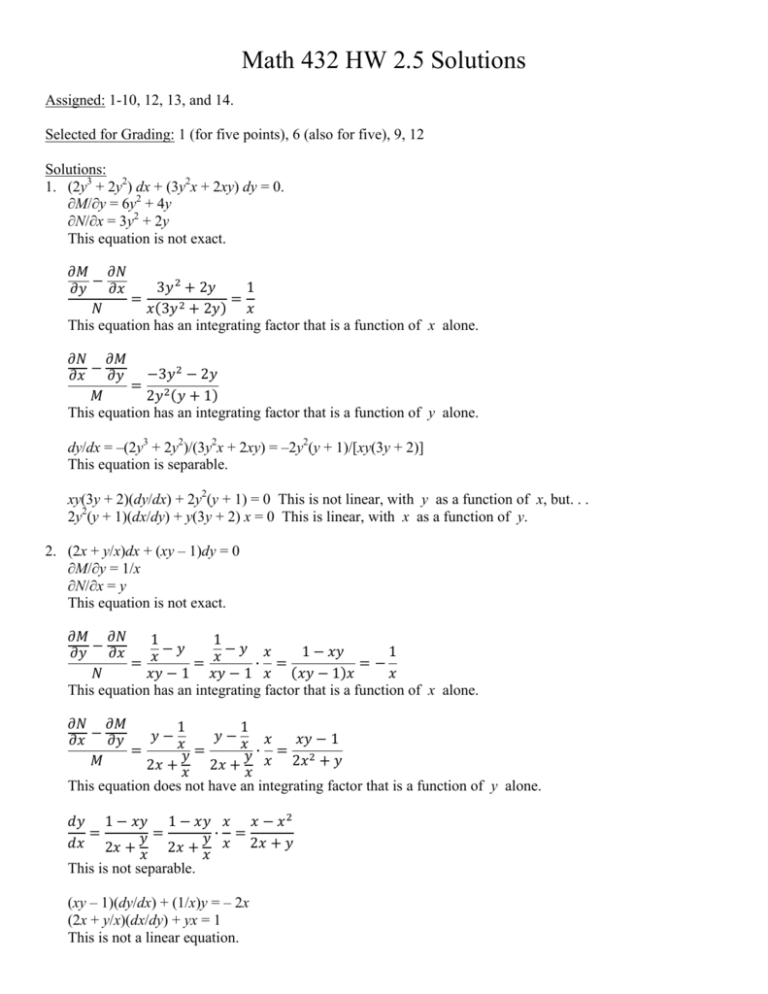
Math 432 Hw 2 5 Solutions
How Do You Find The Area Between The Curves Y 4x X 2 And Y X Socratic
Mccc Edu
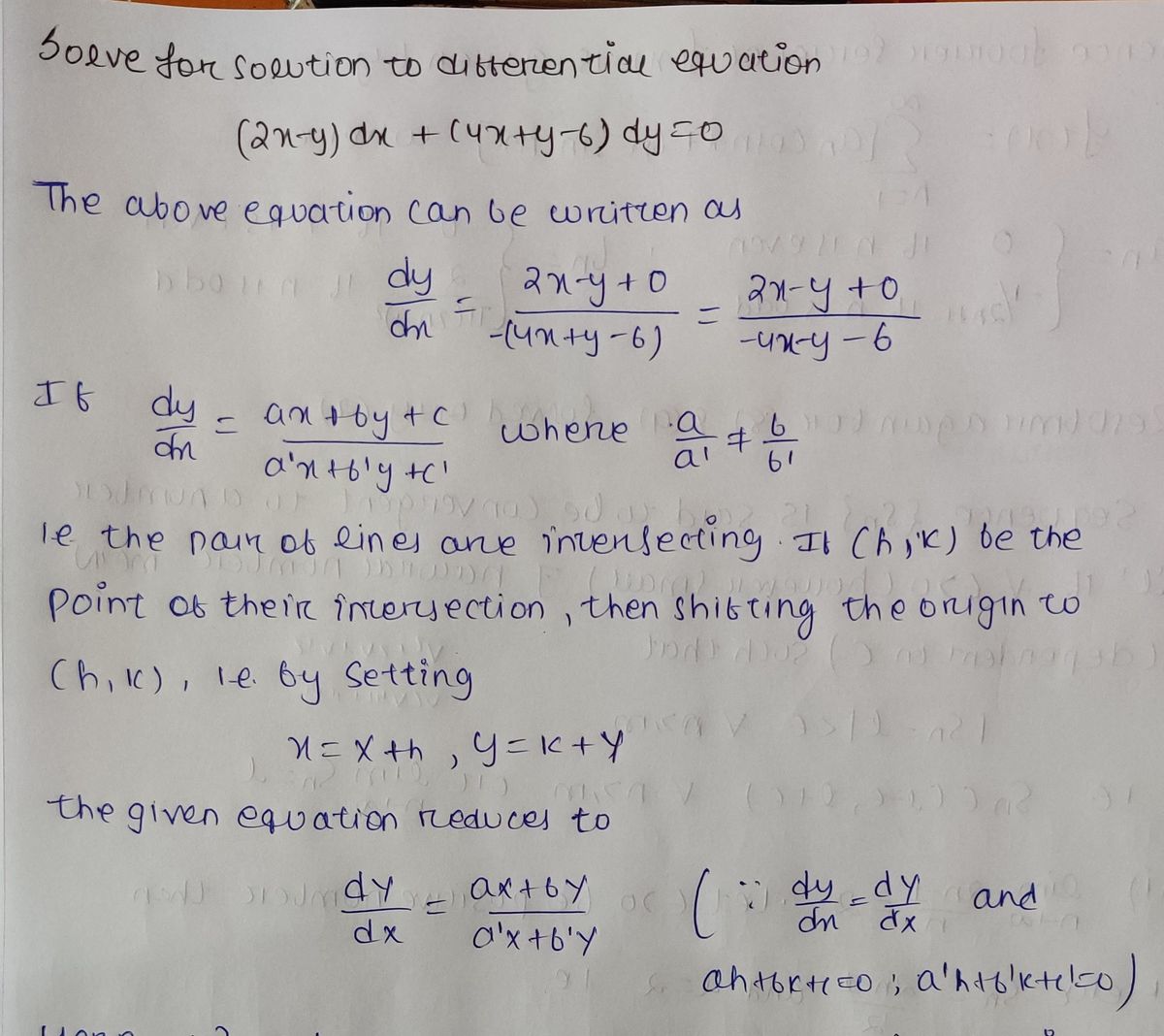
Answered Solve For Solution To Differential Bartleby
2

Ipe Material Notes
How To Solve This Differential Equation Y Xy 2 Dx X X 2 Y 2 Dy 0 Quora

Mth 311 Lecture 3 Ch2 Intro To Diff Eq S Continued Oneclass
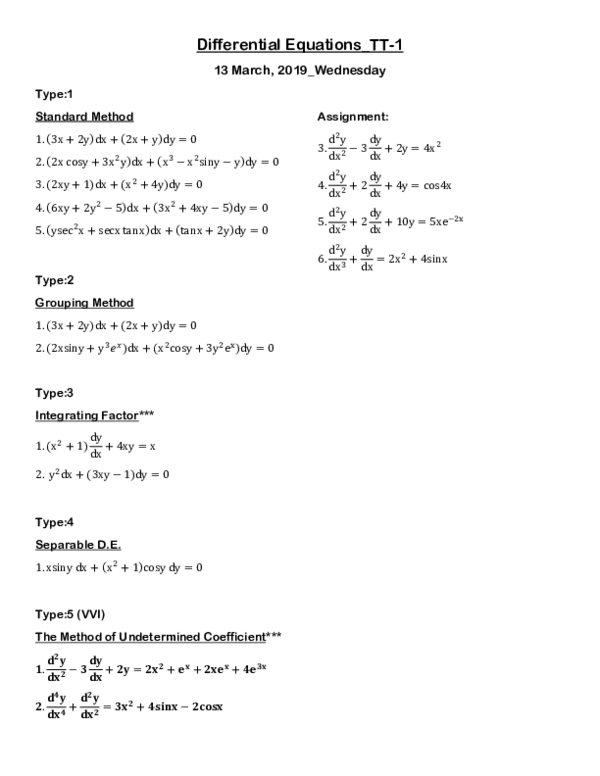
Doc Differential Equations Tt Arafat Rahman Academia Edu
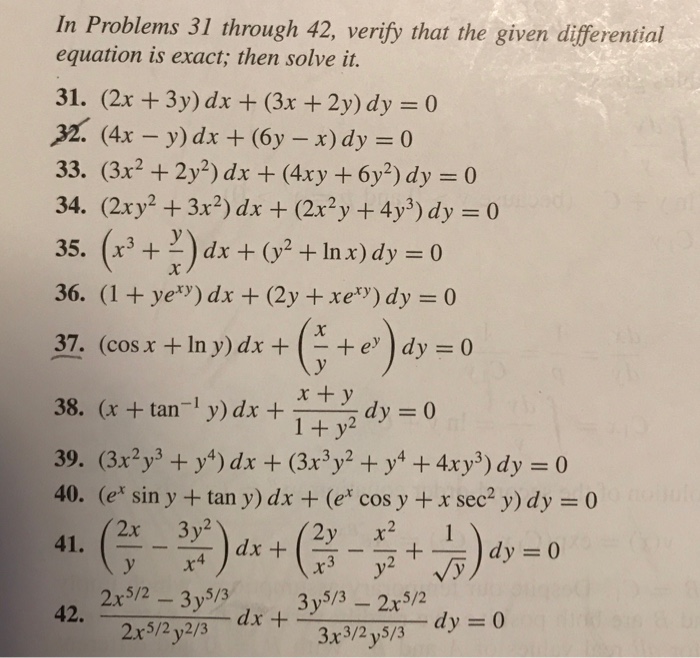
Solved In Problems 31 Through 42 Verify That The Given Chegg Com
2
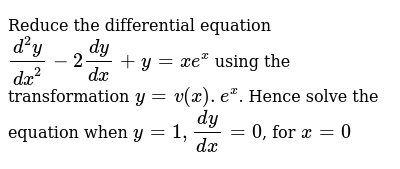
Reduce The Differential Equation D 2y Dx 2 2 Dy Dx Y Xe X Using The Transformation Y V X E X Hence Solve The Equation When Y 1 Dy Dx 0 For X 0

Probability And Statistics With Integrated Software Routines Ppt Download
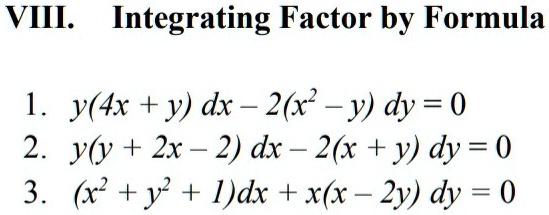
Solved Viii Integrating Factor By Formula 1 Y 4x Y Dx 2x Y Dy 0 2 Y Y 2x 2 Dx 2 X Y Dy 0 3 X
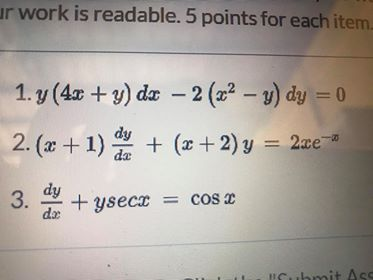
Solved Ur Work Is Readable 5 Points For Each Item 1 Y 4x Chegg Com
Solved Test Ii Solve The Equations Of Coefficients Linear In The Two Variables Y 2 Dx X Y 1 Dy 0 Course Hero
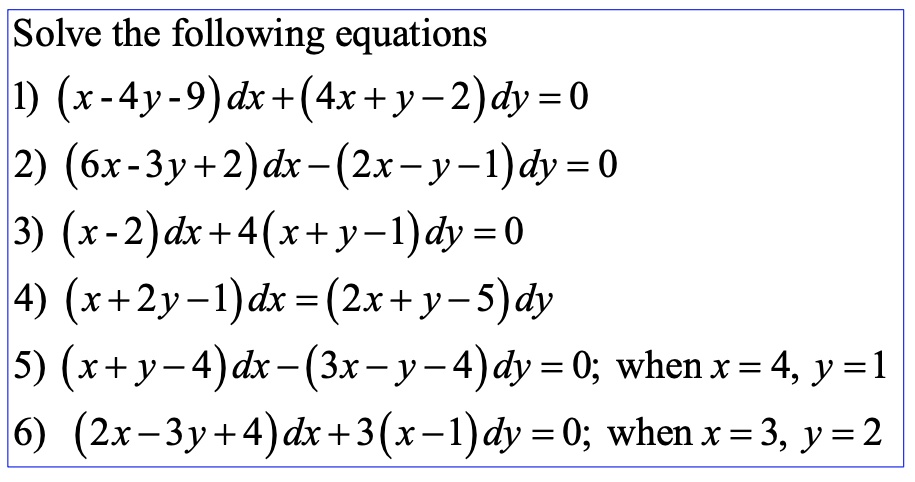
Solved Solve The Following Equations 1 X 4y 9 Dx 4x Y 2 Dy 0 2 6x 3y 2 Dx 2x Y L Dy 0 3 X 2 Dx 4 X Y 1 Dy 0 4 X 2y L Dx 2x Y S Dy 5 X Y 4 Dx 3x Y 4 Dy 0 When X 4 Y 1 6 2x 3y 4 Dx 3 X L Dy 0 When X
Y2 4xy 2x2 10 X2 10x Y2 17 0 Frac X29 Frac Y24 1 X Gauthmath




